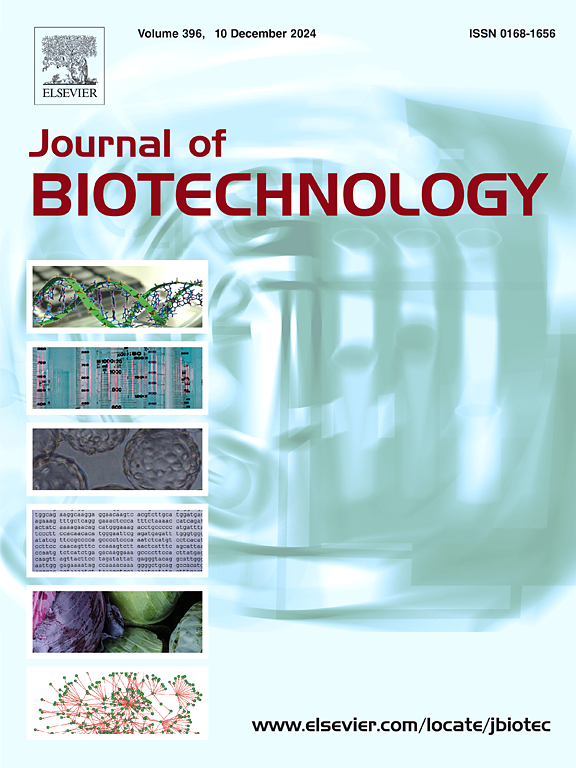产n -乙酰氨基葡萄糖弧菌的代谢工程
IF 3.9
2区 生物学
Q2 BIOTECHNOLOGY & APPLIED MICROBIOLOGY
引用次数: 0
摘要
由于其无与伦比的生长速度和代谢的多功能性,营养弧菌已成为工业生物技术中有前途的微生物底盘。本研究合理设计了V. natriegens ATCC14048作为n -乙酰氨基葡萄糖(GlcNAc)生物合成的高效平台。首先,将大肠杆菌glmS和酿酒酵母Scgna1等关键生物合成基因过表达,敲除GlcNAc天然降解基因nagA,导致GlcNAc滴度为0.11 g/L。随后,阻断戊糖磷酸途径和糖酵解提高了前体可用性,使GlcNAc滴度达到1.22 g/L。通过删除rapZ、nagB和manX基因,以及内源性glmS上游强启动子J23119的染色体整合,代谢通量进一步放大,得到3.59 g/L GlcNAc。通过添加氮源和供氧优化摇瓶培养,最终将摇瓶培养的GlcNAc滴度提高到6.89 g/L。这项工作证明了V. natriegens具有特殊的代谢可塑性,并将其定位为工业规模氨基糖生物制造的优越基础。本文章由计算机程序翻译,如有差异,请以英文原文为准。
Metabolic engineering of Vibrio natriegens for the production of N-acetylglucosamine
Vibrio natriegens has emerged as a promising microbial chassis for industrial biotechnology due to its unparalleled growth rate and metabolic versatility. In this study, V. natriegens ATCC14048 was rationally engineered as a high-efficiency platform for N-acetylglucosamine (GlcNAc) biosynthesis. First, key biosynthetic genes including glmS from Escherichia coli and Scgna1 from Saccharomyces cerevisiae were overexpressed, while the native GlcNAc degradation gene nagA was knocked out, which led to a GlcNAc titer of 0.11 g/L. Subsequently, blocking the pentose phosphate pathway and glycolysis enhanced precursor availability and achieved GlcNAc titer of 1.22 g/L. Metabolic flux was further amplified by deleting rapZ, nagB, and manX genes, along with chromosomal integration of the strong promoter J23119 upstream of endogenous glmS, yielding 3.59 g/L GlcNAc. Shake flask cultivation optimization through nitrogen source addition and oxygen supply ultimately elevated GlcNAc titer to 6.89 g/L in shake-flask cultures. This work demonstrates V. natriegens' exceptional metabolic plasticity and positions it as a superior chassis for industrial-scale biomanufacturing of amino sugars.
求助全文
通过发布文献求助,成功后即可免费获取论文全文。
去求助
来源期刊

Journal of biotechnology
工程技术-生物工程与应用微生物
CiteScore
8.90
自引率
2.40%
发文量
190
审稿时长
45 days
期刊介绍:
The Journal of Biotechnology has an open access mirror journal, the Journal of Biotechnology: X, sharing the same aims and scope, editorial team, submission system and rigorous peer review.
The Journal provides a medium for the rapid publication of both full-length articles and short communications on novel and innovative aspects of biotechnology. The Journal will accept papers ranging from genetic or molecular biological positions to those covering biochemical, chemical or bioprocess engineering aspects as well as computer application of new software concepts, provided that in each case the material is directly relevant to biotechnological systems. Papers presenting information of a multidisciplinary nature that would not be suitable for publication in a journal devoted to a single discipline, are particularly welcome.
 求助内容:
求助内容: 应助结果提醒方式:
应助结果提醒方式:


